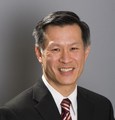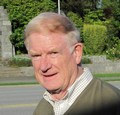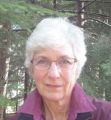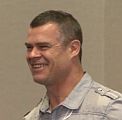WATER SUSTAINABILITY ACTION PLAN: Community-of-practice for ‘Convening for Action in British Columbia’ – “Having the waterbucket.ca website as a communication platform allows the Action Plan partners to ‘tell our story’ and ‘record our history’ as a work-in-progress,” stated Ray Fung (2006)

“Convening for Action is a provincial initiative that supports innovation on-the-ground. From the perspective of those leading and/or participating in regional programs, having this community-of-interest provides the opportunity to ‘tell our story’ and ‘record our history’ as a work-in-progress,” states Ray Fung. “It will turn ideas into action by building capacity and understanding regarding integration of long-term, strategic planning and the implementation of physical infrastructure.”
DOWNLOADABLE RESOURCE: The Partnership for Water Sustainability in British Columbia – Our Story (March 2018)

“Future planners, engineers, scientists, politicians and citizens alike will be called upon to demonstrate both vision and pragmatism, working as a team towards consensus, commitment and collaboration for the common good. Such collaboration is essential and must cross all political and community boundaries given that climate change is no respecter of such creations. The Partnership has accepted this challenge and its implementation,” stated Eric Bonham.
Green, Heal and Restore the Earth: Ian McHarg’s “Design with Nature” vision has influenced implementation of British Columbia’s Water Sustainability Action Plan

In his 1969 book, Design With Nature, Ian McHarg pioneered the concept of environmental planning. “So, I commend Design with Nature to your sympathetic consideration. The title contains a gradient of meaning. It can be interpreted as simply descriptive of a planning method, deferential to places and peoples, it can invoke the Grand Design, it can emphasize the conjunction with and, finally it can be read as an imperative. DESIGN WITH NATURE!,” wrote Ian McHarg.
CONVENING FOR ACTION IN METRO VANCOUVER: “Chuck Gale brought instant credibility as chair because of his stature among local governments and with the Province,” recalls Ray Fung, a retired Director of Engineering in local government, and former Chair of the Green Infrastructure Partnership

As a City Engineer for three Metro Vancouver municipalities over the course of his career, Chuck Gale was a leading voice in the municipal engineering community. He was the driving force behind formation of the Green Infrastructure Partnership. “When we formed the GIP in 2003, green infrastructure was an emerging concept. The paradigm-shift that then occurred far exceeds our original expectation that the partnership would be a catalyst for change,” stated Chuck Gale a decade later.
DOWNLOAD A COPY OF: “Living Water Smart in British Columbia: Green Infrastructure Innovation in the Metro Vancouver region” – released by the Partnership for Water Sustainability in May 2024

“Bringing together and inspiring people, especially those in the trenches, to keep fighting the good fight,” stated Ray Fung. “That is basically what we did in the 2000s and continue to do! How do you judge that time with the advantage of hindsight? It is always a confluence of different things.” In the 2000s, the Green Infrastructure Partnership played a prominent role in leading changes in local government attitudes in the Metro Vancouver region. This influence cascaded from elected representative at Municipal Council and Regional Board tables to practitioners in the trenches.
DOWNLOAD A COPY OF: “Living Water Smart in British Columbia: Regional Growth Strategies for Healthy Communities” – released by the Partnership for Water Sustainability in May 2024

“In the 2000s, we understood that we were going to have to do cities quite differently if we wanted to achieve the sustainability goals that we had set for ourselves. The Province passed the Regional Growth Strategies Act in 1994. This brought back a regional planning structure after BC had been without one for 10 years or so. The intent of the legislation was regional planning across a whole range of values. It was my job to implement regional growth management. We had not done something like that before. It was much more than pure land use planning,” stated Dale Wall.
DOWNLOAD A COPY OF: ‘Living Water Smart in British Columbia: Georgia Basin Initiative legacy ripples thru time” – released by the Partnership for Water Sustainability in April 2024

“The 1990s was a very heady time in government in terms of land use planning and natural resource management. Some initiatives were not implemented all that well, but the Georgia Basin Initiative was the exception. “Launched in 1994, it did exactly what it was intended to do, Moreover, even though it only existed as an entity for a couple of years, it spawned a whole number of other initiatives and programs, some of which blossomed and still exist today,” stated Joan Sawicki, Parliamentary Secretary for the Georgia Basin Initiative during the period 1994-1996.
GEORGIA BASIN INITIATIVE LEGACY RIPPLES THROUGH TIME: “If we have lost anything in the last 30 years, it is a strong provincial commitment to supporting community and regional planning,” stated Joan Sawicki, land and resource management champion, and former provincial cabinet minister

“When you think of the issues we face today….weather extremes, drying rivers, degraded streams, frequent wildfires, population growth, housing affordability…they are no different than they were 30 years ago. They are just more complex and more urgent. We need a renewed provincial provincial emphasis – and yes, that means budget – on supporting community and regional planning and we need another Darlene Marzari. She was the single most important reason for the success of the Georgia Basin Initiative. Darlene Marzari had the knowledge, experience and quiet resolve to make things happen,” stated Joan Sawicki.
DOWNLOAD A COPY OF: “Living Water Smart in British Columbia: Balancing Act – H2O and Healthy Streams” – released by the Partnership for Water Sustainability in April 2024

“Students are always looking for projects where they can make a difference. The idea was how can we bring more science into development to make a difference. I have always looked for people who are within the system but want to make a change. They are the leaders. And if we can contribute some science to these leaders, they can make the difference, not us. All we do is provide the data. And so, connecting with Richard Boase in the 1990s was really fundamental because he is on the inside,” stated UBC’s Dr. Hans Schreier.
BRING THE SCIENCE INTO LOCAL GOVERNMENT: “Hans Schreier of UBC ignited my passion in the mid-1990s when the District worked with UBC on applied research. What we learned was transformational. We then turned our minds to the role of green infrastructure in protecting streams from urban impacts,” stated Richard Boase, career environmental champion within local government in the Metro Vancouver region

“The UBC research team led by Hans Schreier and Ken Hall dated all these sediment cores from Burnaby Lake and extracted sediments from certain years. They identified, for example, when lead stopped being used in gasoline. They also showed how pollutants in road runoff work their way through the drainage networks and into streams where they deposit. It was an inspiring moment for me. I saw a path forward for making a difference. That was the moment when I realized why we must do a better job of erosion and sediment control,” stated Richard Boase.
DOWNLOAD A COPY OF: “Living Water Smart in British Columbia: EAP is a financial tool to help streams survive” – released by the Partnership for Water Sustainability in April 2024

“I am the first master’s student involved in EAP, the Ecological Accounting Process. It is interesting because my research is an applied project that has direct implications for local governments. My research looked at ways we could take EAP from a stream-by-stream approach and apply it to a watershed scale or a regional scale. This might be really useful and cost-effective for local governments that have multiple streams in their jurisdiction. In my thesis, I looked at ways to simplify the process for moving EAP to the regional scale and lower the boundaries to entry on different types of projects,” stated Sam Gerrand.
CONVENING FOR ACTION AT THE 2024 BC LAND SUMMIT: “There are many different parts to EAP. With each part comes a pathway with capacity to help local governments,” stated Anna Lawrence, Project Coordinator, Mount Arrowsmith Biosphere Region Research Institute at Vancouver Island University

Local government Asset Management Plans need real financial values in order to include budgets for streams. “Led by Tim Pringle, the Partnership for Water Sustainability created the methodology for EAP, the Ecological Accounting Process. EAP has been passed on to VIU as part of the intergenerational baton. Now we are in a 3-year transition strategy to embed it. As we become more familiar with EAP and its applications, it is becoming increasingly apparent that it requires tailored communication to a variety of audiences,” stated Anna Lawrence.
CONVENING FOR ACTION AT THE 2024 BC LAND SUMMIT: “The phrase attitude change goes to the heart of what the Partnership session will showcase at the Land Summit. With an attitude change, anything is possible,” stated Kim Stephens, Executive Director of the Partnership for Sustainability

“At the BC Land Summit, the Partnership will deliver two 90-minute interactive sessions under the banner Going Beyond Just Doing Enough. In the first session, Richard Boase and Paul Chapman explain what the Blue Ecology vision for an attitude change looks like through the local government and stewardship sector lenses. In the second session, a team led by Tim Pringle presents the methodology and metrics for tackling the Riparian Deficit. Because local government Asset Management Plans need real financial values, EAP fills a gap,” stated Kim Stephens.


